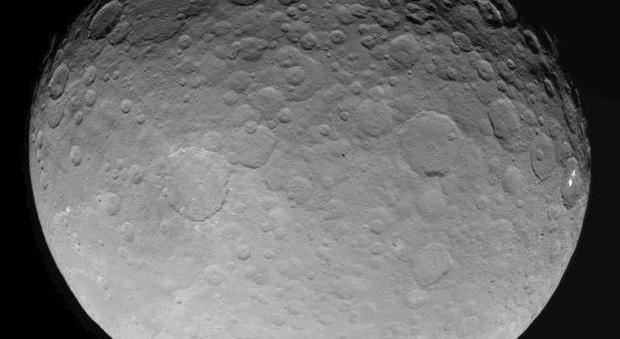CNET readers' best guesses at explaining those Ceres mystery spots
This article, CNET readers' best guesses at explaining those Ceres mystery spots, originally appeared on CNET.com.

The mystery spots seem to shine brightly at all angles. NASA/JPL
For a few months now, we've been hearing all kinds of possible explanations for what the heck is causing those bright, reflective spots on Ceres -- the largest object in the asteroid belt -- as NASA's Dawn spacecraft slowly moves in for a closer look.
The leading theory is that we're seeing the sun bouncing off large patches of ice, but there are other possible explanations, and I've already compiled eight of the most interesting hypotheses. But since then we've had a bit of a closer look, and our readers have suggested plenty more quite sensible (and occasionally quite silly) reasons why a dwarf planet seems to be sporting a bright pair of high beams.
Among the most scientifically viable (and least exciting) reader suggestions that we haven't heard elsewhere are sheets of glinting mica, limestone, a new kind of phosphorous material, large pools of liquid mercury, natural glass formed by an ancient impact or eruption -- or that the spots are not nearly as bright as they seem, but are a byproduct of very long exposures taken by Dawn's cameras to make up for the fact that Ceres is actually quite dark.
Related stories
8 possible explanations for those bright spots on dwarf planet Ceres
Dwarf planet Ceres' bright spots shrink but stay strange on approach
Then there are the more speculative ideas that tend to be a little more fun, like the lights being powered by electrical discharges from, well...something.
Naturally, there are plenty of suggestions that the lights are evidence of some sort of intelligent life, or more specifically of the ever-impressive ubiquity of Starbucks or Walmart.
Reader Jeff_R has this "ancient astronauts" explanation, but I can't really tell if it's meant to be serious or not:
"It's the remnants of an interstellar probe sent to study the formation of our solar system billions of years ago. Before it ran out of fuel it was intentionally crashed on Ceres to avoid possibly influencing the rise of life on one of the inner planets orbiting in the goldilocks zone."
Whatever there is to be found on the surface of Ceres, we're sure to hear plenty more about it over time, unless of course it turns out to be a Death Star powering up its weapons.
